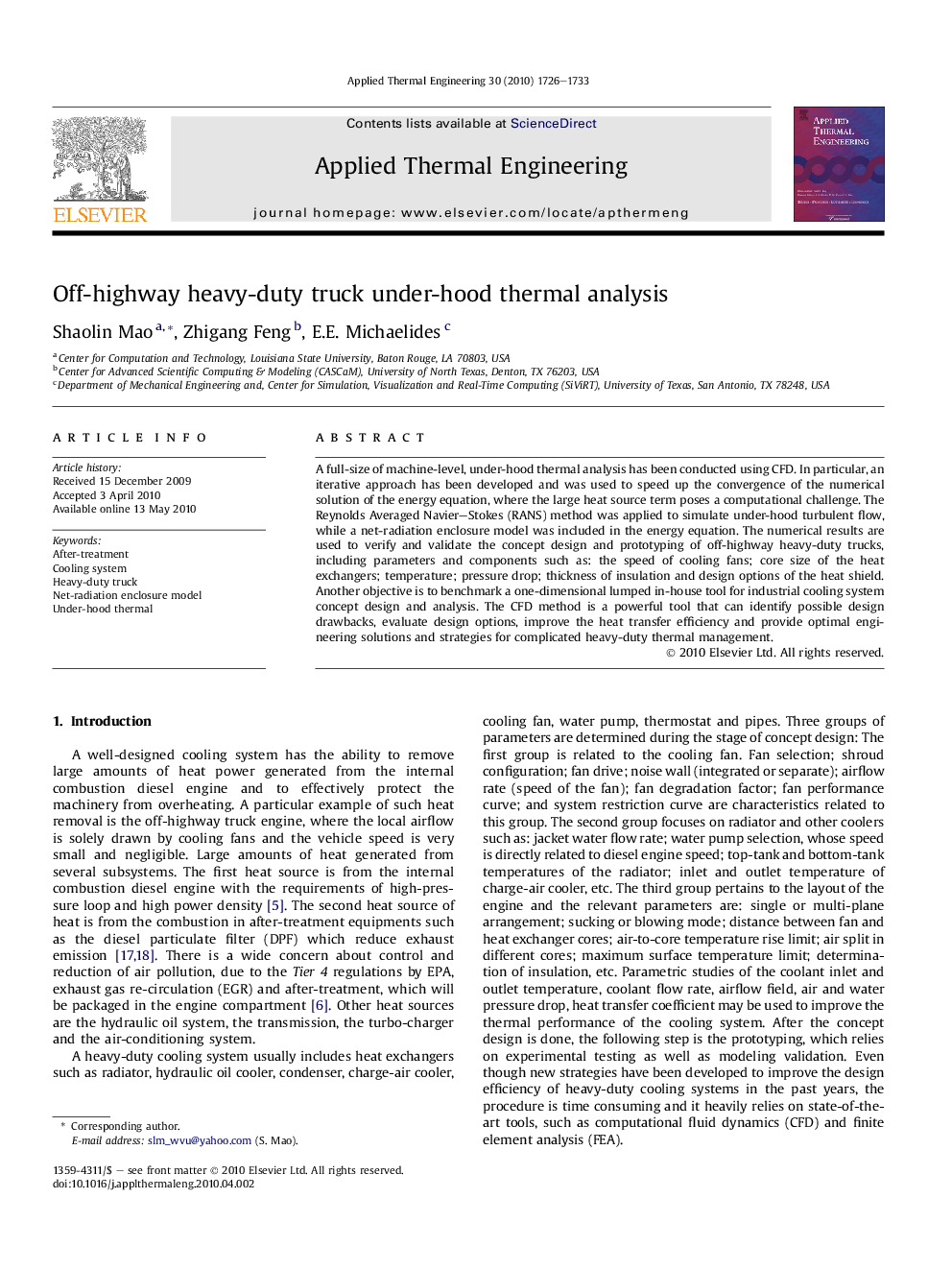| Article ID | Journal | Published Year | Pages | File Type |
|---|---|---|---|---|
| 648134 | Applied Thermal Engineering | 2010 | 8 Pages |
A full-size of machine-level, under-hood thermal analysis has been conducted using CFD. In particular, an iterative approach has been developed and was used to speed up the convergence of the numerical solution of the energy equation, where the large heat source term poses a computational challenge. The Reynolds Averaged Navier–Stokes (RANS) method was applied to simulate under-hood turbulent flow, while a net-radiation enclosure model was included in the energy equation. The numerical results are used to verify and validate the concept design and prototyping of off-highway heavy-duty trucks, including parameters and components such as: the speed of cooling fans; core size of the heat exchangers; temperature; pressure drop; thickness of insulation and design options of the heat shield. Another objective is to benchmark a one-dimensional lumped in-house tool for industrial cooling system concept design and analysis. The CFD method is a powerful tool that can identify possible design drawbacks, evaluate design options, improve the heat transfer efficiency and provide optimal engineering solutions and strategies for complicated heavy-duty thermal management.
